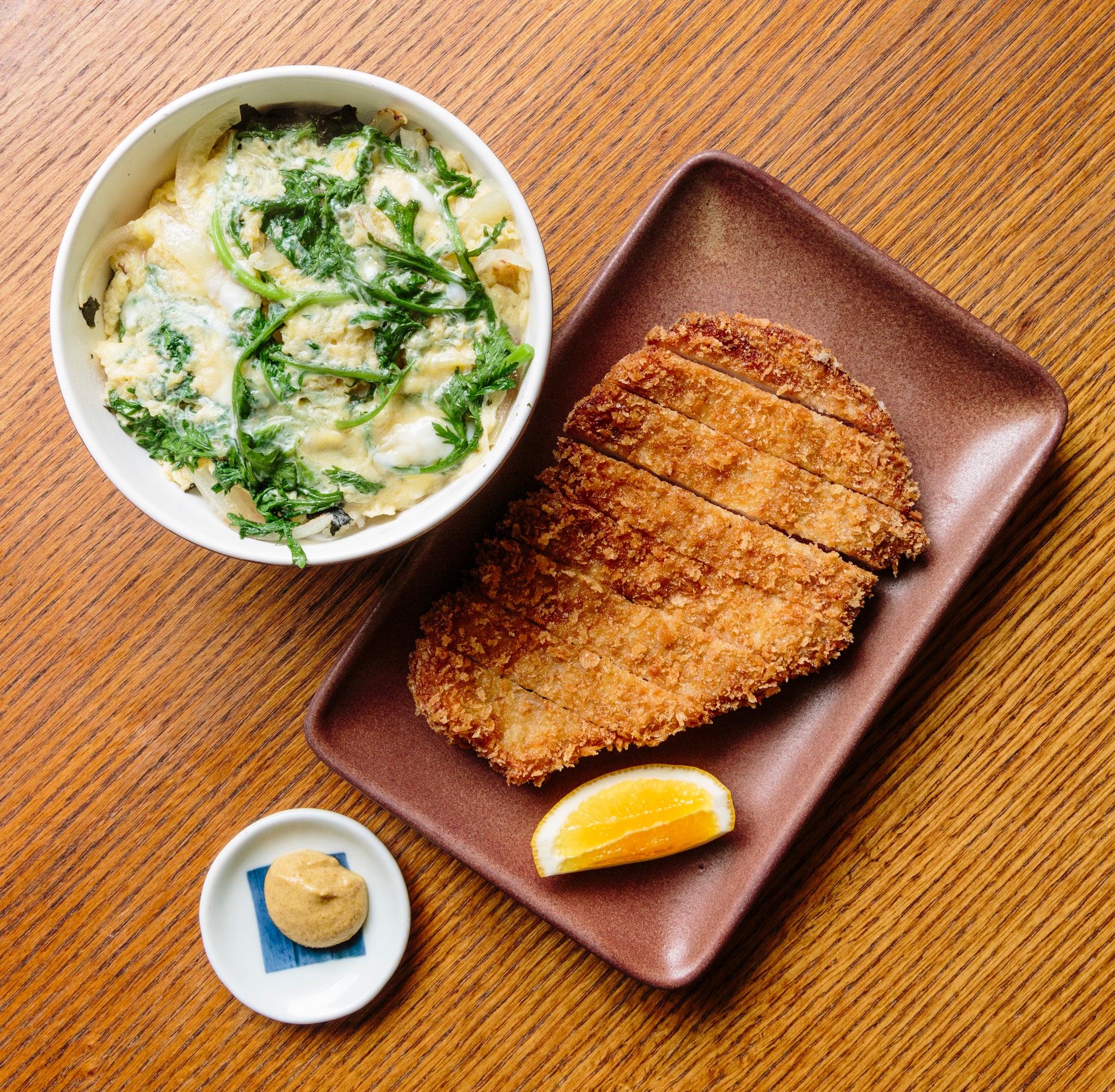Katsudon
Greg Dunmore
Servings
2
The first thing people say when they see this recipe, is why isn’t the tonkatsu inside the egg mixture that’s on top of the rice? That is what I said when Yoko, my “Japanese mom”, made this for me the first time. She and Tom said it is because this way the tonkatsu does not become soggy. Ever since I ate it this way, I am a convert and I feel it is the best way to showcase the dish.
Ingredients
- ½ pound boneless, skinless pork loin, cut into 2 slices of even thickness
- Salt & freshly ground black pepper
-
1 teaspoon Hanamaruki Liquid Shio Koji, or a pinch of salt
- 1 egg
- ½ tablespoon milk
- ¼ cup flour
- 2 cups panko
- Neutral oil, for frying
-
2/3 cup dashi
-
2 teaspoons Nitto Jozo White Tamari
-
2 teaspoons Suehiro Usukuchi Soy Sauce
- 2 teaspoons mirin
- 2 teaspoons sake
-
1 teaspoon Morino Yoshino Kuzu
- ¼ cup onions, sliced about ¼ inch thick
-
2 eggs
- Shungiku
- 2 cups cooked Japanese-style rice
-
1 Full Sheet of Motoi Nori (or 2 half sheets)
- 2 each lemon wedges (optional)
-
1 tablespoon Yamasei Organic Karashi Mustard Powder, mixed with warm water (optional)
Directions
- Use a meat tenderizer mallet to gently pound the 2 pork fillets. Be careful not to pound too hard; you just want to gently tenderize and to make the pork about ½ inch thick. Season on both sides with salt and pepper.
- Whisk the eggs with the liquid shio koji and milk in a large bowl. Spread the flour on one large plate and the panko on another. Dredge one pork cutlet in flour on all sides, shaking off any excess. Next, dunk the pork into the egg mixture, then shake off excess egg mixture. Lastly, dredge in panko, pressing lightly to help the crumbs adhere. Repeat to coat both cutlets. If you have time, refrigerate the cutlets for 15-20 minutes, as this will help the panko to stick better.
- Heat 1 inch of oil to 350℉ in a high-sided skillet (or other pan suited to shallow-frying). Carefully lay the pork fillets in the pan. Depending on your skillet size, you may have to cook in batches. Once the tonkatsu starts to brown on the bottom, gently turn it over. You might have to do this a couple of times to achieve an even, golden brown crust.
- Once your pork is golden brown, remove from the oil and place on a rack or a plate lined with paper towels to help remove excess oil. Season with salt immediately so the salt with stick. Let rest one minute then cut in half to make sure it is cooked through. If for some reason it is not, place in 400℉ oven to finish cooking.
In a small bowl, whisk the dashi, white tamari, soy sauce, mirin, sake and kuzu until well combined. Crack one egg into each of two separate bowls and whisk each egg well.
- To prepare the next steps, you will need two small sauté pans with lids. If you do not have 2 pans, you can just do one at a time.
Heat the pan(s) over medium high heat, divide the dashi mixture and onions evenly in both pans and bring to a simmer. Then add the shungiku and then the whisked egg by pouring it into the pan is circular motion, then cover right away and cook for between 30 seconds to a minute, or until the egg is set.
- Divide the cooked rice into two bowls,. Crush the nori with your hands, then sprinkle on top of the rice. Now add the dashi, egg and shungiku mixture on top of the nori rice. Sometimes the mixture might stick to the pan, so I use rubber spatula to make sure nothing is sticking before I pour it over.
- On a cutting board, cut the crispy pork cutlets crosswise into roughly ½ inch strips, place on a plate with a lemon wedge and the karashi mustard. Serve alongside the rice bowl and enjoy.


